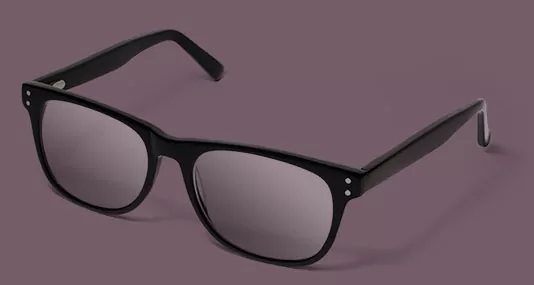The use of 3D visualisation in e-commerce leads to significant improvements in customer interaction and sales. The key benefits include increased customer engagement, higher sales conversions, and a decrease in product return rates, thanks to the realistic representation of products through 3D models.
📊 3D Visualisation Impact
| Impact Area | Statistic | Source |
| Engagement Increase | Up to 66% | Cappasity |
| Conversion Rate Improvement | Boosted by up to 200% | iEnhance |
| Return Rate Reduction | Decreased by up to 40% | Shopify |
The table above provides a concise overview of the significant impacts of 3D visualisation on key e-commerce metrics, emphasising its role in enhancing customer shopping experiences and increasing sales.
Related Read: What is a 3D configurator?

TL;DR: Enhancing E-commerce with 3D Visualisation
This article explores the transformative impact of 3D visualisation in e-commerce. It highlights how 3D technologies like Futura3D are reshaping online retail by enhancing customer experience and engagement.
Key Takeaways:
- 3D models significantly boost customer engagement and sales conversions in e-commerce.
- Challenges in implementing 3D on the web include performance issues and maintaining visual fidelity.
- Futura3D addresses these challenges, making 3D model creation more accessible and efficient.
- 3D visualisation is a competitive advantage in the evolving landscape of online sales.
This summary offers a brief overview of the in-depth discussion on 3D visualisation in the article.
Software Development UK offers a track record of delivering high-quality bespoke 3D design and visualisation solutions.
How Can 3D Software Boost E-commerce Sales?

How 3D Visualisation Is Transforming E-commerce and Enterprise-Level Operations
3D visualisation is significantly enhancing the e-commerce and enterprise landscape. It introduces an interactive dimension to online shopping, transforming customer experiences and decision-making processes. In enterprise applications, 3D modelling streamlines design, development, and production, leading to cost savings and efficiency improvements.
In the e-commerce realm, 3D visualisation directly addresses the challenge of replicating the physical store experience. Customers can interact with products in a life-like manner, leading to increased confidence in their purchases. In enterprise scenarios, 3D modelling accelerates the design process, improves accuracy, and allows for rapid prototyping.
Enterprise Application Impact:
| Application Area | Benefit | Example Outcome |
| Design | Enhanced Accuracy | Reduced Prototyping Errors |
| Production | Efficiency Gains | Faster Time-to-Market |
| Cost Savings | Reduction in Overheads | Lower Development Costs |
This table summarises the impact of 3D visualisation in enterprise applications, showcasing its role in improving operational efficiency and reducing costs.
Analysing the Impact of 3D, Video, and Images on E-commerce Engagement and Sales
This section explores the different impacts of 3D visualisation, video, and static images on customer engagement and sales in e-commerce. While traditional media like images and videos provide a basic level of product understanding, 3D visualisation elevates this by offering an immersive, interactive experience. This leads to higher engagement rates, better product understanding, and ultimately, increased sales conversions.
Studies suggest that 3D visualisation significantly outperforms traditional media in engaging customers. It provides a more realistic and interactive way for customers to view and understand products, leading to a deeper connection and higher likelihood of purchase.
📉 Comparative Media Impact:
| Media Type | Engagement Impact | Sales Conversion Impact | Business Value Summary |
| 3D Model | Highest | Highest | Drives maximum engagement and purchase likelihood due to immersive, interactive experience. |
| Video | Moderate | Moderate | Offers better product understanding but lacks interactivity of 3D models. |
| Image | Lowest | Lowest | Provides basic product visualization with minimal engagement. |
This table outlines the varying impacts of 3D models, videos, and images on customer engagement and sales conversions in e-commerce. The summary column adds context by explaining the business value of each media type.

What are the challenges of using 3D over the Web?
Implementing 3D technology on the web and mobile devices comes with its set of challenges. Addressing these is crucial for a successful and effective 3D implementation:
- Performance Issues: Smooth performance across various devices and platforms is essential.
- File Size and Loading Time: High-quality visuals must be balanced with manageable file sizes to prevent long loading times.
- Compatibility and Accessibility: Ensuring 3D models are accessible and functional across different web browsers and mobile devices.
- User Experience Design: Creating an intuitive and user-friendly interface for 3D model interaction.
- Visual Fidelity: Often, 3D models on the web and mobile devices are simplified to reduce loading times, which can compromise visual quality.
To create a truly effective 3D solution for the web and mobile, these challenges must be thoroughly addressed. Software Development UK’s Futura3D platform is designed specifically to overcome these challenges, delivering an optimal user experience by maintaining high visual fidelity and performance efficiency.


Discuss Your Project Today
Why 3D Parametric Models Enhance User Experience?
A parametric model is a type of 3D model where the shape is defined by parameters and algorithms. This allows for easy adjustments and customisations of the model’s features. It improves user experience and engagement in e-commerce as customers can interact with products more dynamically, like changing colours or dimensions to see how the product would look in real life. This heightened interactivity leads to a deeper understanding of the product and a more personalised shopping experience, increasing the likelihood of a purchase.
3D parametric models offer extensive benefits, enhancing both the design process and the e-commerce experience.
- Customisation: They enable users to alter elements like size, colour, and other features, catering to specific preferences.
- Accurate Visual Representation: These models provide highly realistic product depictions, aiding in informed purchasing decisions.
- Enhanced User Engagement: Interactive nature of these models significantly boosts customer interest and engagement.
- Virtual Inspections: They allow for detailed virtual examinations of products, facilitating better understanding.
- Rapid Prototyping: Enables quick creation and iteration of new designs and ideas.
- Cost Calculation: Assists in accurately estimating material costs and requirements.
Parametric models revolutionise product representation and customer interaction by offering unprecedented levels of customisation, realism, and interactivity. They are invaluable in rapidly prototyping designs, performing virtual inspections, and accurately calculating material costs, thereby transforming both the user experience and business capabilities.
Overcoming 3D Model Creation Challenges with Futura3D
One major obstacle in adopting 3D visualisation technology is the complexity and time required in creating 3D models. Traditionally, this process demands expert CAD modellers and advanced tools, making it both time-consuming and technically demanding.
Challenges in Traditional 3D Modelling:
- Expertise Requirement: Necessitates skilled professionals proficient in CAD software.
- Time-Consuming: Model creation can be a lengthy process.
- Complexity: Involves intricate details and technical know-how.
Futura3D by Software Development UK addresses these challenges head-on. It not only delivers an exceptional online user experience but also simplifies the model creation process. Its advanced tooling lowers the barrier, allowing users to create models more easily and rapidly compared to traditional software like 3D Studio Max, Blender, or AutoCAD.

Need Expert Guidance?
We provide fully managed end-to-end solutions for operators and service companies needing expert guidance.
Take advantage of our unique {SD:UK} CTO as a Service solution. Our experts help you to formally capture requirements, create a system specification and then fully manage the implementation of your project for a successfull delivery.


The Future of E-commerce with 3D Visualisation
In the competitive world of online sales, 3D visualisation emerges as a key differentiator for businesses seeking an edge. While utilising 3D offers a significant competitive advantage by enhancing customer engagement and experience, the journey to building a viable 3D solution is fraught with challenges, particularly in model creation and integration.
Our Futura3D platform, addresses these challenges, offering an innovative and efficient solution for e-commerce. It simplifies the creation of high-fidelity, interactive models, ensuring seamless integration across web and mobile platforms. Learn more about Futura3D by downloading our online brochure.
We invite businesses to explore the transformative potential of Futura3D. Contact our team for a free consultation to understand how Futura3D can enhance your solution, offering a next-generation user experience that can significantly boost your sales.
Further Reading:
To enhance your understanding of software development, particularly bespoke 3D visualisation solutions, the following books are recommended. They cover a range of topics explaining the beenfits of 3D visualisation and how it can be used for marketing purposes and beyond:
- “Augmented Reality for Marketing” by M. Carmen Juan Lizandra. It explores how augmented reality, closely linked to 3D visualisation, can be leveraged in marketing to improve sales and customer engagement.
- “Virtual Reality for Business” by Jeremy Dalton. This book discusses the various business applications of virtual reality, a field closely related to 3D visualisation, offering insights into how VR can drive sales and improve customer experiences.
- “Digital Marketing for Dummies” by Ryan Deiss and Russ Henneberry. While not solely focused on 3D visualisation, this book covers a broad spectrum of digital marketing strategies, including emerging technologies like 3D visualisation and their impact on sales and engagement.
Frequently Asked Questions
Provided below is an FAQ to help you understand our services in more detail. If your question is not covered please feel free contact us.
3D visualisation elevates customer engagement by offering a lifelike, interactive experience. Unlike static images, 3D models allow users to rotate, zoom, and explore products, providing a clearer understanding and a more tangible feel of the product. This level of interaction fosters deeper customer interest and helps in making informed purchase decisions, leading to increased customer satisfaction and higher conversion rates.
3D models offer several advantages over traditional photography in e-commerce. They provide a 360-degree view, enabling customers to examine products from all angles. This results in a more accurate representation of the product, minimising uncertainties and reducing return rates. Additionally, 3D models offer an engaging and interactive experience, significantly enhancing customer interest and interaction with the product.
While 3D models are more data-intensive than traditional images, advancements in technology and optimisation techniques, like those used in Futura3D, ensure that they load efficiently without significantly impacting website speed. Effective 3D model optimisation balances high-quality visuals with performance, ensuring a smooth user experience.
Implementing 3D visualisation can be simplified with platforms like Futura3D, which offer user-friendly interfaces and tools that require minimal technical expertise. These platforms provide templates and easy-to-use tools, allowing businesses to create and integrate 3D models into their e-commerce sites effortlessly.
Augmented Reality (AR) plays a pivotal role in e-commerce by overlaying digital information onto the real world. In e-commerce, AR allows customers to visualise how products would look in their environment, enhancing their purchasing confidence and decision-making process. It offers a more immersive experience, further bridging the gap between online shopping and the physical retail experience.
3D visualisation significantly influences consumer behaviour by providing an immersive and interactive shopping experience. It increases customer confidence, reduces the likelihood of returns, and enhances engagement, leading to longer session times and higher conversion rates. By offering a more detailed view of products, 3D visualisation helps customers make better-informed purchasing decisions.
Yes, 3D models contribute to reducing product return rates. By providing customers with a comprehensive view and a better understanding of the product, 3D models reduce the mismatch between customer expectations and the actual product. This clarity in product representation minimises the likelihood of returns due to unmet expectations.
The future of e-commerce will likely see an increased integration of 3D visualisation, with more sophisticated and interactive models. Trends suggest a move towards virtual reality (VR) shopping experiences, enhanced AR applications, and even more seamless integration of 3D models within e-commerce platforms, offering even more realistic and engaging customer experiences.

